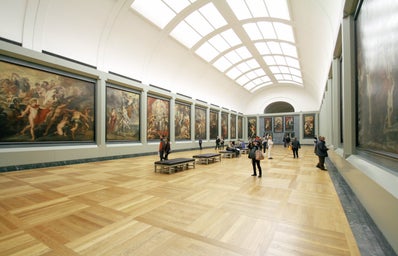Russia’s violent and unsolicited invasion of the Ukraine has caused great suffering and loss for the Ukrainian people, with hundreds of civilian fatalities and millions displaced already. Consequently, there has been an international uproar, with protests around the globe denouncing Putin’s actions and calling for peace. This political and civil crisis profoundly disrupts not only the lives of citizens, but also the art world.
An irreparable byproduct of war is the demolition of culturally significant architectural and religious landmarks and artistic artifacts. One lamentable example is the destruction of the Museum of Local History in Ivankic, which housed twenty-five paintings by the beloved and celebrated Ukrainian folk artist, Maria Prymachenko. With countless other instances of disregard for art objects and world heritage sites, including the bombing of a seventeenth century monastery in Sviatohirsk that was providing shelter for civilians, Russia faces being revoked of its UNESCO membership.
In Lyiv, art conservationists are taking preventative measures to protect their cultural heritage as they await confrontation with Russian armed forces. Precious monuments are being scaffolded and wrapped in flame-resistant padding. And walls, cabinets, and plinths lay empty in the National Museum of Lyiv, which relocated its inventory underground. Among the fifteen hundred sheltered pieces is the museum’s prized seventeenth century Iconostasis (a large religious structure separating the sanctuary from the nave) that was hidden from the Nazis during World War II and banned from being displayed during the Soviet era. After being meticulously restored in 2006, it’s being dismantled once again. History seems to cruelly and unforgivingly repeat itself.
Putin’s invasion threatens to eliminate the rights, freedom and safety of Ukrainian citizens but also their identity in their cultural heritage. The National Museum director, Ihor Kozhan, highlights the importance of protecting these artistic objects and historic sites: “The museums here hold the history of the nation. They give us an understanding of who we were, who we are, and who we will be.”
In Russia, citizens are responding to Putin’s war with hostility. Anti-war graffiti decorate public facades and protesters are honourably stepping into the streets despite the possibility of arrest or imprisonment. Putin’s invasion is also isolating Russia within the art world. As a sign of protest, Russian artists withdrew from the Venice Biennale, signifying Russia’s absence at one of the most prominent international exhibitions. Additionally, artists are pulling out of exhibitions at state-backed museums in Russia. Russian artists further articulated their anti-war sentiments in an open letter, signed by seventeen hundred artists, condemning the invasion of the Ukraine and addressing its repercussions on the art community, stating that an “engagement with culture and the arts will be almost impossible in these conditions.”
However, Ukrainian artists are being hit the hardest. The brutality, uncertainty, and displacement has profoundly hindered their lives, killing their art production and halting their exhibition schedules. Some have taken to spreading awareness via social media, while others are using their artistic skills to aid the war effort. For example, painter Volo Bevza was preparing for his exhibition when Russia invaded Ukraine. Now, he is building anti-tank obstacles since “[he] couldn’t think about art anymore.” War unequivocally pushes art and culture to the wayside.
One of the most poignant and powerful displays of solidarity occurred at the Guggenheim Museum, as paper planes created by New York based artists glided down the museum’s rotunda. The leaflets contained information on Russia’s invasion and conveyed a provocative statement: “This jet is made of paper…But what if it were steel…and carried bombs over the heads of the ones you love.” Art is a powerful means of activism and has been historically employed in major movements. It continues to be a crucial aspect for the dissemination of information and rallying of support.
Despite our helplessness in the face of this conflict, there are ways to support Ukrainian artists and Ukraine. For example, websites like Art4Ukraine and Pictures for Purpose are selling prints by Ukrainian photographers with proceeds going to nonprofits supporting the cause. Similarly, you can also donate to charities like Counterpoint Arts which supports refugee artists.
The impact of Russia’s invasion of the Ukraine on the art world is undeniable, but the resilience and spirit demonstrated by the art community is beyond admirable.


